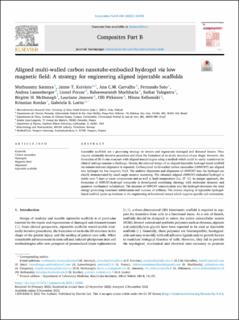| dc.contributor.author | Muthusamy, Saranya | |
| dc.contributor.author | Koivisto, Janne T. | |
| dc.contributor.author | Carvalho, Ana | |
| dc.contributor.author | Sato, Fernando | |
| dc.contributor.author | Lassenberger, Andrea | |
| dc.contributor.author | Porcar, Lionel | |
| dc.contributor.author | Muchharla, Baleeswaraiah | |
| dc.contributor.author | Talapatra, Saikat | |
| dc.contributor.author | Mcdonagh, Birgitte Hjelmeland | |
| dc.contributor.author | Janssen, Lauriane | |
| dc.contributor.author | Pitkänen, Olli | |
| dc.contributor.author | Kellomäki, Minna | |
| dc.contributor.author | Kordas, Krisztian | |
| dc.contributor.author | Lorite, Gabriela S. | |
| dc.date.accessioned | 2023-09-05T13:00:55Z | |
| dc.date.available | 2023-09-05T13:00:55Z | |
| dc.date.created | 2023-01-19T10:33:42Z | |
| dc.date.issued | 2022 | |
| dc.identifier.citation | Composites Part B: Engineering. 2022, 248, 110398. | en_US |
| dc.identifier.issn | 1359-8368 | |
| dc.identifier.uri | https://hdl.handle.net/11250/3087535 | |
| dc.description.abstract | Injectable scaffolds are a promising strategy to restore and regenerate damaged and diseased tissues. They require minimally invasive procedure and allow the formation of an in-situ structure of any shape. However, the formation of 3D in-situ structure with aligned morphologies using a method which could be easily transferred to clinical settings remains a challenge. Herein, the rational design of an aligned injectable hydrogel-based scaffold via remote-induced alignment is reported. Carboxylated multi-walled carbon nanotubes (cMWCNT) are aligned into hydrogel via low magnetic field. The uniform dispersion and alignment of cMWCNT into the hydrogel are clearly demonstrated by small angle neutron scattering. The obtained aligned cMWCNT-embodied hydrogel is stable over 7 days at room temperature and as well at body temperature (i.e. 37 °C). As unique approach, the formation of MWCNT-hydrogel composite is investigated combining rheology with molecular dynamic and quantum mechanical calculations. The increase of MWCNT concentration into the hydrogel decreases the total energy promoting structural stabilization and increase of stiffness. The remote aligning of injectable hydrogel-based scaffold opens up horizons in the engineering of functional tissues which requires specific cell orientation. | en_US |
| dc.language.iso | eng | en_US |
| dc.publisher | Elsevier | en_US |
| dc.rights | Navngivelse 4.0 Internasjonal | * |
| dc.rights.uri | http://creativecommons.org/licenses/by/4.0/deed.no | * |
| dc.title | Aligned multi-walled carbon nanotube-embodied hydrogel via low magnetic field: A strategy for engineering aligned injectable scaffolds | en_US |
| dc.title.alternative | Aligned multi-walled carbon nanotube-embodied hydrogel via low magnetic field: A strategy for engineering aligned injectable scaffolds | en_US |
| dc.type | Peer reviewed | en_US |
| dc.type | Journal article | en_US |
| dc.description.version | publishedVersion | en_US |
| dc.rights.holder | © 2022 The Authors. Published by Elsevier Ltd. | en_US |
| dc.source.volume | 248 | en_US |
| dc.source.journal | Composites Part B: Engineering | en_US |
| dc.identifier.doi | 10.1016/j.compositesb.2022.110398 | |
| dc.identifier.cristin | 2110065 | |
| dc.relation.project | EC/H2020/654000 | en_US |
| dc.relation.project | EC/H2020/814558 | en_US |
| dc.relation.project | EC/H2020/731096 | en_US |
| dc.source.articlenumber | 110398 | en_US |
| cristin.ispublished | true | |
| cristin.fulltext | original | |
| cristin.qualitycode | 2 | |

